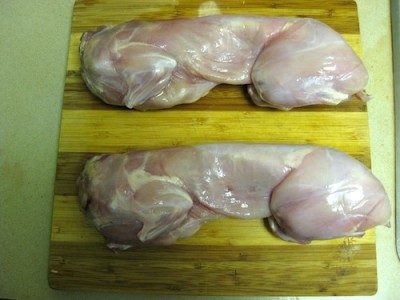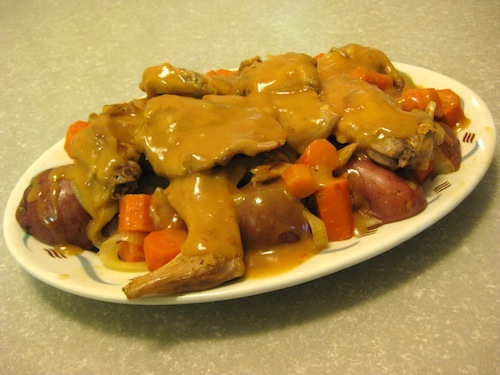Rabbit: The Other “Other White Meat”
Not the popular choice for Easter dinner…
/https://tf-cmsv2-smithsonianmag-media.s3.amazonaws.com/filer/Bunny_new2.jpg)
It seems Americans suffer from "Easter Bunny syndrome." We relate to rabbits as cartoon characters, imaginary friends, bedtime story heroes, annual purveyors of sugary treats and, yes, pets. Given their formidable cute factor—those adorable fuzzy ears! that cotton ball tail!—we tend not to think of them as a table offering. And Glenn Close's kitchen shenanigans in Fatal Attraction only solidified the taboo of eating bunnies. Although a mainstay of European cuisine, restaurant chefs on this side of the pond who dare to place rabbit dishes on the menu get flak from appalled diners. Though perhaps even more appalling is the fact that, unlike other meats, there are no Congressional mandates requiring rabbit meat to be federally inspected before it reaches our plates.
Nevertheless, it's a meat source that has its advantages. It's a lean protein that's low in cholesterol. If you're a do-it-yourselfer carnivore, rabbits are easy to raise, and since they breed like, well, you know, they provide a steady supply of food. These perks were especially noted during World War II. With rationing in effect, prime meat products such as beef weren't always readily available whereas rabbit was off-ration and was *ahem* fair game for cooks. In light of the times, one advertisement in Gourmet magazine quipped: "Although it isn't our usual habit / This year we're eating the Easter Rabbit." However, by the 1960s, most home chefs were kicking the rabbit habit.
I grew up with a pet bunny. Beechnut, a light brown Holland lop, gave me 11 years of affection, and I couldn't have asked for better animal companionship. But after reading about how a German breeder has created giant rabbits that could help alleviate food shortages in Korea and watching an episode of The Perennial Plate on sustainable rabbit farming, I grew curious about how rabbit actually tasted. (Word of warning: the last minute or so of the Perennial Plate's bunny episode does show a rabbit being slaughtered, so do not click if you are faint of heart.) If I could eat venison after repeated viewings of Bambi, this shouldn't be much different, right? There are rabbits for pets and there are rabbits for eating. At least that's what I kept repeating as I planned Sunday dinner.
Seeing two headless, skinless, yet distinctly rabbit-ish carcasses stretched out on my cutting board ranks as the most Buñuelian kitchen experience I've had. Being used to buying my edible animals in bits and pieces, it's easy to dissociate those parts from a clucking, mooing, oinking whole. But here I was, set to carve up a creature I otherwise looked to for social comfort. When it comes to cutting up a chicken, I generally wing it—and having seen it done plenty of times before, I can go in feeling fairly confident and competent. But for this, I went to YouTube and watched—and re-watched and re-re-wtached—a video on how to cut up a rabbit before reaching for a knife. Even though the animals were already dead, a poor butchering job somehow seemed like I would be adding insult to injury. I wanted to do the best I could, paying careful attention as to where to slice and which vertebrae to crack and twist apart. With the dirty work done, the pieces were browned in olive oil and braised in beer with chili sauce, onions, carrots and red potatoes with a tasty gravy made from the remaining cooking liquid.
And the result? I learned that domestic rabbit tastes like chicken. Furthermore, with the only nearby market that carries them asking $3.99 a pound, it's an elite meat that tastes like the cheap stuff. Perhaps bunnies fed on grass and greens—like what you would find in the wild—would have a different flavor, but I'm in no rush to cook one again. Most of my cookbooks advised to prepare rabbit as you would chicken, though I think it makes more sense to do the opposite. That said, chocolate bunnies will suit me just fine.
And in spite of sounding incredibly tacky given the above: Easter is a rough time of year for rabbits (please, hold your remarks). Pet rabbits are given as gifts, but recipients may not be willing to assume the responsibility of caring for them, and these animals are frequently abandoned. If you want a rabbit for a pet, please do some background research before you commit and consider checking out your local rescue organization. If you are bent on buying a brand new bunny, please go to a reputable breeder.
For the rest of you looking for rabbits to eat: happy hunting and bon appétit!

